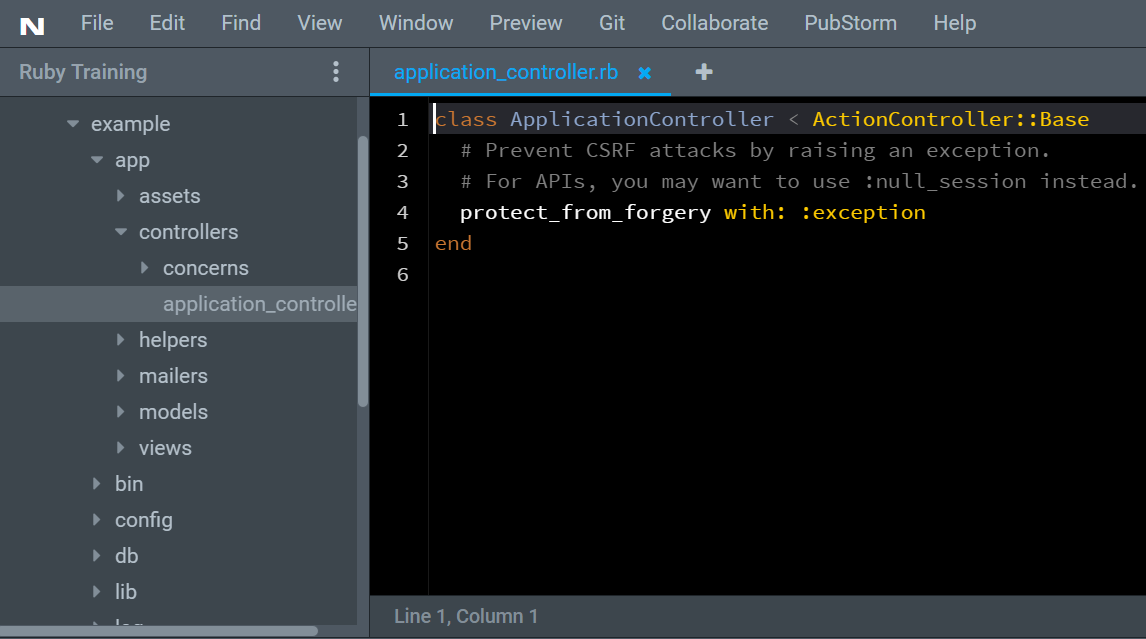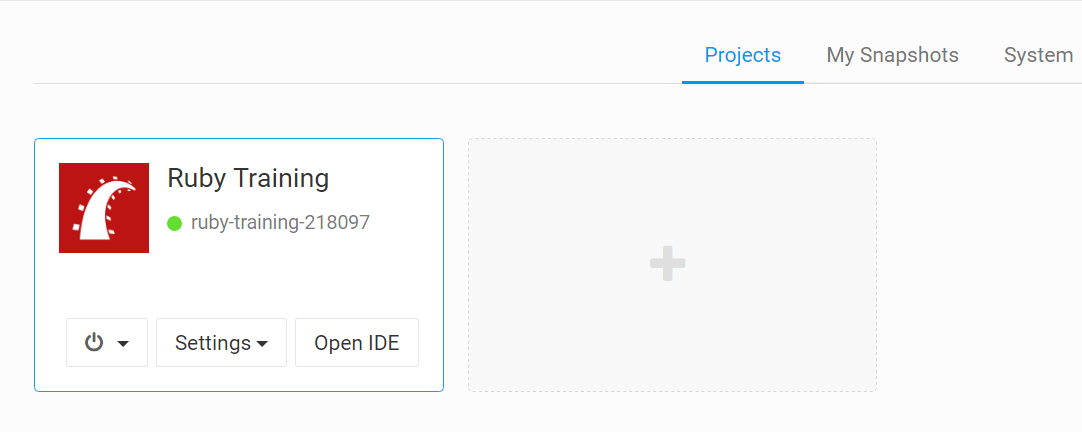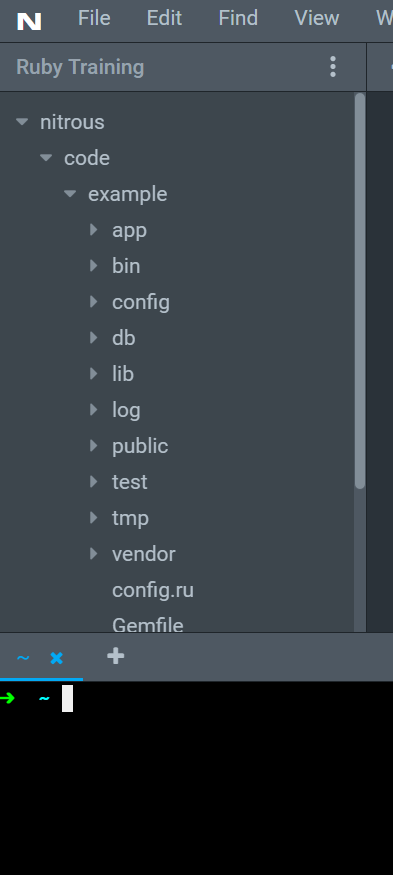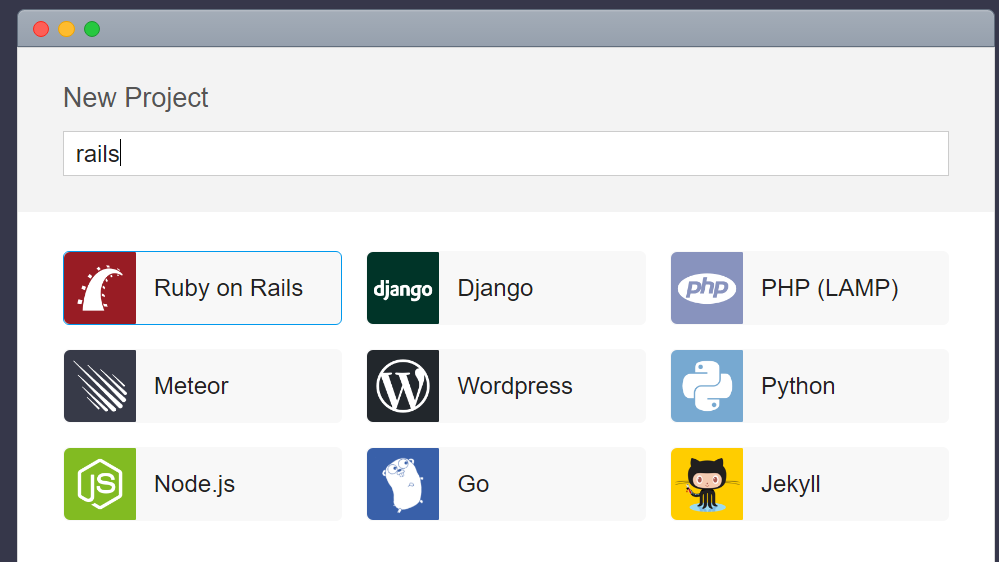Learning Ruby on Rails with Nitrous.io
I’ve been programming a long time. I’ve written professional applications in Java, PHP, C#,ASP.NET, C++, and Silverlight. I’ve seen a lot of fads, and I’ve seen a lot of tools for programming come and go. My point is I think I know a pretty good thing when I see it, and Nitrous is definitely one of those things. I get it and I love it! So here’s what happened.

Recently I set out to learn Ruby on Rails. This is something I’d been wanting to do but never seemed to find the time. RoR has a strong following and it goes with my desire to learn as many languages and frameworks for web development as I can (watch for future articles on my experiences learning Flask and Django).
Installing Ruby and Rails is Painful
As any novice of this powerful web framework will tell you, the process of installing Ruby and Rails is painful! It’s not really hard but it’s time-consuming. Now I know there are some purists who will arguably insist in order to understand the framework better you should learn how to install and set it up. Okay, makes sense maybe but if that were true many hours would not have been spent on projects like the RailsInstaller or on programs to maintain theses installations, such as rbenv and RVM (Ruby Version Manager). That’s not to say there aren’t places you can’t get really good guidance installing Ruby and Rails. Here are a couple of my favorites:
- Go Rails – Go Rails – Setup
- DigitalOcean – How to Install Ruby on Rails with rbenv on Ubuntu 16.04
Despite the appreciable efforts of these folks, though, I’m not the most patient guy. I want to spend my precious time learning the language and framework to build cool stuff, not spend two days setting it up and attempting to understand every nuiance. At least… not at first. EnterNitrous!
What’s this Nitrous Stuff?
I have to admit that I’d never heard of it until I was watching the complete Ruby on Rails Development course at Udemy.com. And no… I’m not talking about the gas that comes from the dentist or found in a whipped cream can. Up to this point I’d been using ShiftEdit as my cloud-based IDE. Now don’t get me wrong, I like that tool but I wasn’t having much luck getting it connected to a server and I sort of felt it had some limiting features. Nitrous on the other hand offered a turnkey solution. So what is Nitrous? Well, it’s a company with offices in San Francisco and Singapore, but regarding the actual platform here it is in their own words:
Create a new environment in seconds with the Nitrous cloud IDE. Deploy straight from the CLI with PubStorm.
Sound too good to be true? Ha! Think again, fellow code monkeys, because I signed up and had a Ruby on Rails configuration up in about three minutes. Here’s a quick screenshot of the environment presented to me.
For the Settings I was able to add collaborators (like my instructor or a peer if I needed help), generate secure keys and manage domains. When opening the IDE, a sample RoR project had already been created with all of the needed infrastructure, plus a command prompt for entering CLI commands.
This basically gave me an out of the box application so I could start learning Ruby on Rails immediately, whether referencing a book or video course or just tinkering around on my own. I can only imagine how powerful this will when I want to create sites on the fly.
But Wait… It Get Better!
I am also able to create a variety of different types of apps. Are you a Python and Django lover? No problem! How about WordPress? They even have a setup for Go and another for Node.js. This is really good news for those wanting to learn Go because talk about a pain! And the list goes on
I’m sure there are those who might shake their heads in amazement that any professional software engineer would want to bypass the privilege of having to set up environments in order to learn a new language. Bunk! I think this is greatest thing since sliced bread. You can also publish these sites using PubStorm, Nitrous’s command line client. I just recently deployed my new site there.
Nitrous is also undoubtedly a great place for prototyping applications. In just a few clicks you can set up and deploy a site for a customer, something very important in the web space today, without having to worry about having a whole lot of infrastructure. That makes this a very cool interface for startups that doesn’t require any real up front investment or costs, and very little time for even the least savvy web developers, engineers, and designers.
Summary
I’m not going to pretend like Nitrous is the only cloud-based IDE ever developed, but it’s fast becoming the one I prefer. I will state unequivocally it’s one of the easiest to use, and I present that only as a personal preference and not out of any desire to debate the merits in contrast to other cloud-based IDEs. I’m a geek and a coding nerd, and I’m allowed by little idiosyncrasies just like everybody else.
Take this thing for a spin, particularly if you’re out to learn a new language or framework in their offerings. You won’t be disappointed.
| Reference: | Learning Ruby on Rails with Nitrous.io from our WCG partner Jon Guenther at the Software Engineering blog. |









Good to get an opinion on Nitrous. I have been using Cloud9 (https://c9.io/) but looking to move to Nitrous which seems to have more features for the same price.
Thanks for your feedback, Yakob. I’ve never used Cloud 9 so I couldn’t really speak to the differences. It was the other cloud-base IDE the course instructor said could be used, however. My impression is these are the two main competitors in the marketplace. I have used Codeanywhere (http://codeanywhere.com) and it’s on par with Nitrous. The main difference I saw between those two was that Nitrous is more hours based whereas Codeanywhere seems to price more by what they call “Containers”. You can see the comparison of their price plans here – https://codeanywhere.com/pricing. Happy coding!